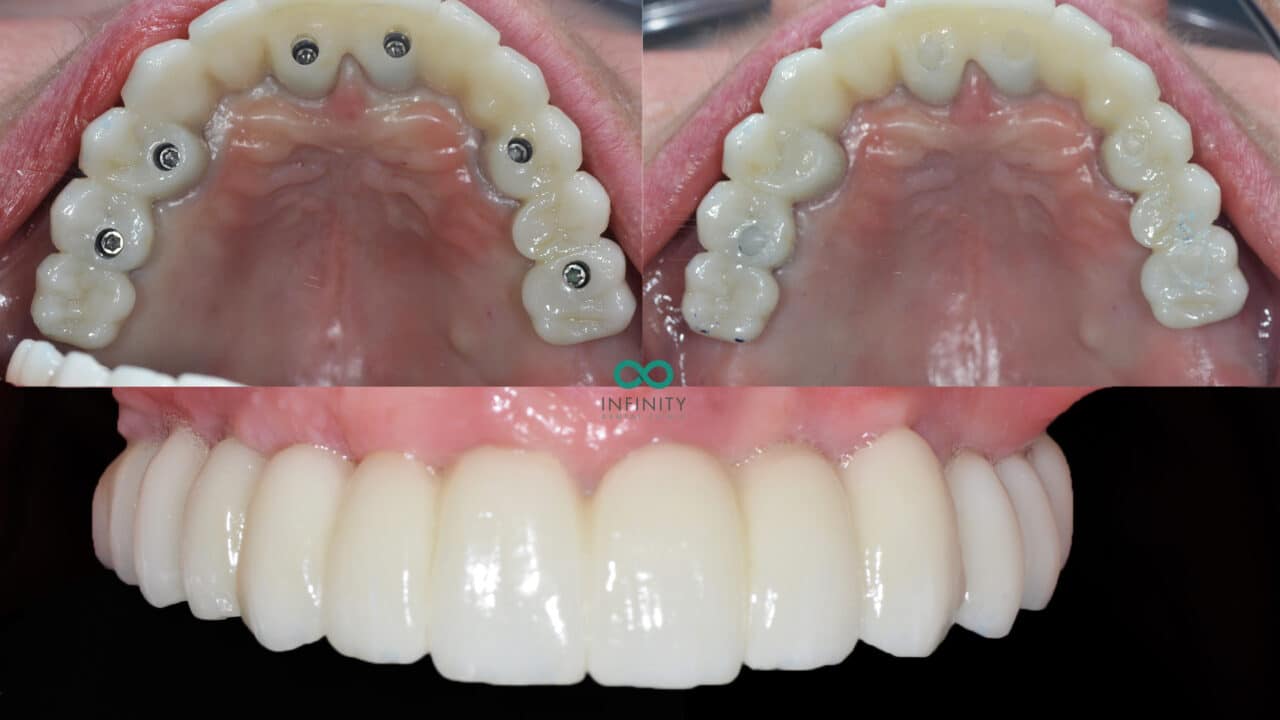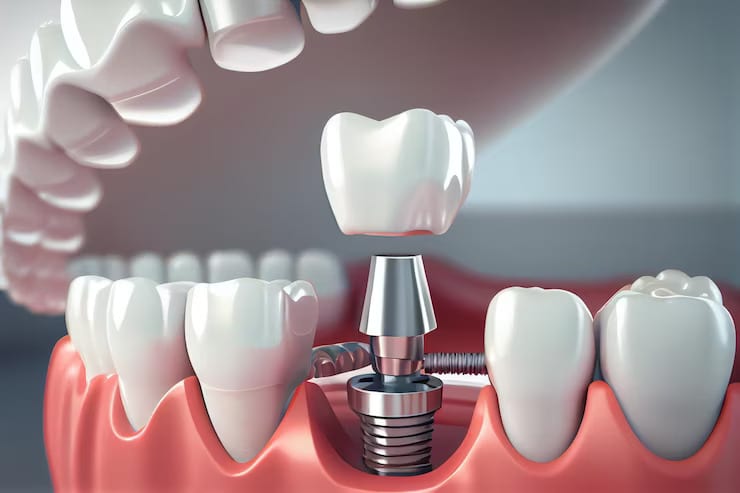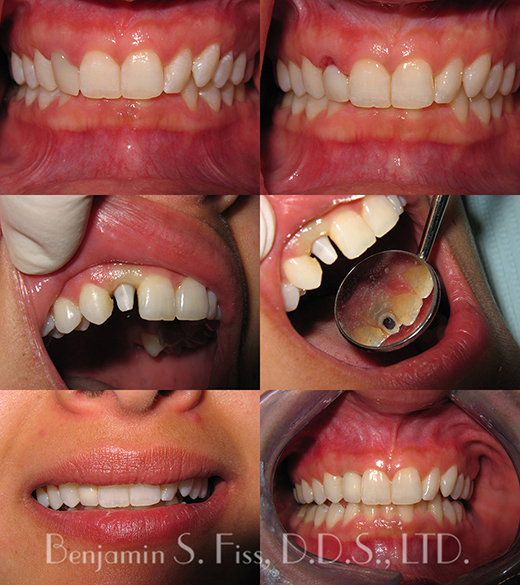Dental Care Granville OH Step-by-Step Guide to Dental Implant Procedures
Dental Care Granville OH Step-by-Step Guide to Dental Implant Procedures
Blog Article
Dental Center Galena OH Full Mouth Dental Implants
Dental implants have revolutionized restorative dentistry, providing a reliable alternative to conventional methods for replacing missing teeth. The integration of dental implants with the jawbone is a posh organic process known as osseointegration. This course investigate this site of not only anchors the implant securely but also helps keep jawbone health, preventing the bone visit their website loss typically related you can look here to missing teeth.
The dental implant itself is usually manufactured from titanium, a biocompatible materials that the physique accepts. When an implant is positioned in the jaw, it is designed to intently mimic the foundation of a natural tooth, which is essential for effective integration. The titanium surface encourages the growth of bone cells, enabling the jawbone to bond with the implant over time.
Dentist Office Alexandria OH Full Mouth Dental Implants

Several stages constitute the osseointegration course of. Initially, when the implant is surgically positioned into the jaw, a healing period is required for the encircling bone to begin out transforming. During this time, the bone grows across the implant, creating a stable and secure basis. This therapeutic time can range, usually lasting several weeks to a couple months, relying on various elements, together with the individual's total health and the specific location of the implant.
The function of surrounding bone quality is essential. High-density bone sometimes offers a better setting for osseointegration in comparability with lower-density bone. Specialists usually consider the quality and amount of bone earlier than the implant placement to determine the best plan of action, which can involve bone grafting procedures in circumstances of insufficient bone volume. Grafting enhances the possibilities of successful integration by making a extra strong base for the implant.
The biological mechanisms behind osseointegration contain various mobile activities. Osteoblasts, the cells responsible for bone formation, migrate to the implanted space and begin to put down new bone material. Simultaneously, the surface of the titanium implant undergoes modifications that facilitate this bonding process. Some newer implant designs incorporate floor modifications to further improve biological integration.
Orthodontics Alexandria OH Frequently Asked Questions About Dental Implants
Throughout the mixing course of, the function of blood provide cannot be overstated. An adequate blood supply nourishes the bone and ensures the right functioning of the cells involved in the healing and integration course of. Improved blood circulate results in faster therapeutic and higher outcomes, which is why surgical strategies and aftercare usually prioritize sustaining or enhancing blood circulation to the site of the implant.
Improvements in surgical techniques also contribute significantly to the success rates of dental implants - Family Dental Clinic Hartford OH. Minimally invasive methods and guided implant surgery allow for more exact placement of implants, lowering trauma to the encircling tissues and doubtlessly rushing up the healing time. The less trauma experienced by the jawbone can result in a extra favorable surroundings for osseointegration
Johnstown Dental Centerburg OH Dental Implant Services: Find the Best in Your Area

How an individual maintains their oral hygiene after receiving an implant can considerably affect integration success. Proper care around the implant site helps prevent infections, which might disrupt the healing process. Regular dental check-ups are additionally very important to monitor the health of each the implant and the encompassing gum and bone tissues.
Long-term success with dental implants is often linked to components similar to lifestyle selections. Patients who smoke or have uncontrolled diabetes might expertise decrease charges of osseointegration. These conditions intrude with therapeutic and blood supply, making it important for individuals contemplating implants to debate their health history with their dentist.
After the profitable integration of the implant, the subsequent phase includes placing the prosthetic restoration, corresponding to a crown. The final restoration should fit comfortably and functionally combine with the prevailing dentition. Dental Care Associate Granville OH. Proper alignment and occlusion play essential roles in how nicely the implant will perform over time
Dental Care Associate Hartford OH Dental Implant Types: Choosing the Right Solution
Dental implants present a long-lasting resolution that helps preserve the integrity of the jawbone. When a tooth is lost, the bone that once anchored its root begins to deteriorate. Implants stimulate the bone similarly to natural teeth, triggering the jaw to take care of its density and energy. This stimulation is essential for stopping the sunken facial appearance that often accompanies tooth loss.
In conclusion, the integration of dental implants with the jawbone includes a posh interplay of biological and mechanical elements. Understanding the osseointegration course of can empower people to make knowledgeable selections about their dental health. By appreciating the significance of selecting a talented dental skilled and adhering to post-operative care, sufferers can obtain optimal outcomes and luxuriate in restored perform and aesthetics for a few years to come back.

- Dental implants mimic the structure of natural teeth and provide a secure foundation by integrating with the jawbone via a process referred to as osseointegration.
- The biocompatibility of titanium, commonly used for dental implants, plays an important role in promoting successful bonding with bone tissue.
- Osseointegration typically begins within a number of weeks post-surgery, with the implant surface steadily changing into enveloped by bone cells.
- The mechanical stability of implants is enhanced by their floor roughness, which inspires bone progress and improves the mixing process.
- Immediate loading of implants could be feasible in certain circumstances, relying on bone density and the patient’s general dental health.
- Over time, the jawbone responds to the presence of an implant by undergoing transforming, contributing to the long-term success of the procedure.
- Factors such as oral hygiene, smoking habits, and systemic medical conditions can considerably influence the mixing process of dental implants.
- Regular follow-ups and imaging techniques, corresponding to X-rays, might help monitor the success of osseointegration and detect potential problems early.
- The preservation of surrounding bone structure is enhanced by the stimulation provided by dental implants, which may help prevent bone loss in adjacent areas.
- Successful integration not solely restores functionality to the tooth but also contributes considerably to the aesthetics of the affected person's smile and facial structure.undefinedWhat are dental implants and how do they work with the jawbone?undefinedDental implants are titanium posts surgically inserted into the jawbone to serve as synthetic tooth roots. Once placed, they undergo a course of referred to as osseointegration, where the jawbone naturally fuses with the implant, making a secure foundation for the replacement tooth.
How does osseointegration occur?undefinedOsseointegration is a organic process where bone cells develop and attach to the floor of the dental implant. This sometimes takes several months, throughout which the implant becomes firmly anchored within the jawbone, making certain strength and stability for the bogus tooth.
Dental Implants Alexandria OH The Best Dental Implant Services
What factors influence the success of dental implant integration?undefinedKey elements embody the standard and amount of the jawbone, the patient's overall health, and oral hygiene practices. Adequate bone density is crucial, as insufficient bone might impede profitable integration.
Is the pain throughout dental implant placement significant?undefinedMost sufferers report minimal discomfort during the procedure, as local anesthesia is used. Post-operative pain is generally manageable with over-the-counter pain aid drugs, and most discomfort subsides inside a couple of days.
How long does the combination course of take?undefinedTypically, osseointegration takes about three to 6 months. However, this can vary based on individual healing processes and the specific conditions of the jawbone.
Can anyone get dental implants?undefinedMost individuals are candidates for dental implants; however, certain conditions such as uncontrolled diabetes or severe gum disease may have an effect on eligibility. A thorough evaluation by a dental professional is necessary to find out suitability.
Family Dental Clinic Columbus OH The Advantages, Risks, and Insurance for Dental Implants
What may be carried out if there is not enough jawbone for integration?undefinedIf there is inadequate bone, procedures like bone grafting can be carried out to augment the jawbone. Once the graft heals, dental implants can then be positioned, permitting for successful integration.
Are there long-term care concerns after getting dental implants?undefinedYes, maintaining glorious oral hygiene is significant for the longevity of dental implants. Regular dental check-ups and cleanings additionally help prevent issues and ensure the ongoing health of the surrounding bone and gum tissue.
Dental Care Columbus OH Full Mouth Dental Implants: A Comprehensive Solution
How do dental implants examine to different tooth replacement options?undefinedDental implants are sometimes thought-about superior to dentures and bridges because of their sturdiness, stability, and the preservation of jawbone health. Unlike different choices, implants fuse with the jawbone, which helps keep bone density and facial structure.
Report this page